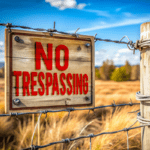 Understanding Land-Use Regulations in Texas
Understanding Land-Use Regulations in Texas
Texas law allows public and private entities to regulate land use, often surprising landowners. These rules can affect property value, limit marketability, or block intended uses. Without proper knowledge, disputes and litigation may arise.
Public Land-Use Regulations
Municipalities primarily enforce public land-use rules, including zoning, platting, building codes, signage, and drainage.
- Zoning: Defines permitted land uses through city regulations.
- Platting: Ensures proper infrastructure for land development.
- Building Codes: Establish safety standards based on international models.
- Signage: Controls aesthetics and safety within legal limits.
- Drainage: Manages water flow to prevent flooding.
Private Land-Use Regulations
Private restrictions stem from legal agreements between property owners and developers, including:
- Restrictive Covenants: Limit land use to maintain property values.
- Property Owners’ Associations (POAs): Enforce community rules and oversee approvals.
- Easements: Grant third parties access for utilities, roads, or pipelines.
Due Diligence Matters
Buyers and sellers should conduct due diligence before transactions:
- Identify Regulations: Check municipal websites and title insurance commitments.
- Assess Impact: Evaluate zoning, easements, and covenants.
- Explore Solutions: Consider rezoning, variances, or legal consultation.
- Negotiate Terms: Extend due diligence periods if needed.
Real Estate Professionals’ Role
While not legal advisors, real estate professionals help clients navigate land-use issues by gathering information, identifying concerns, and recommending legal experts. Staying informed helps ensure smooth transactions and avoids costly mistakes.
Notes from original article by Reid Wilson, Published on Texas A&M Real Estate Research Center






